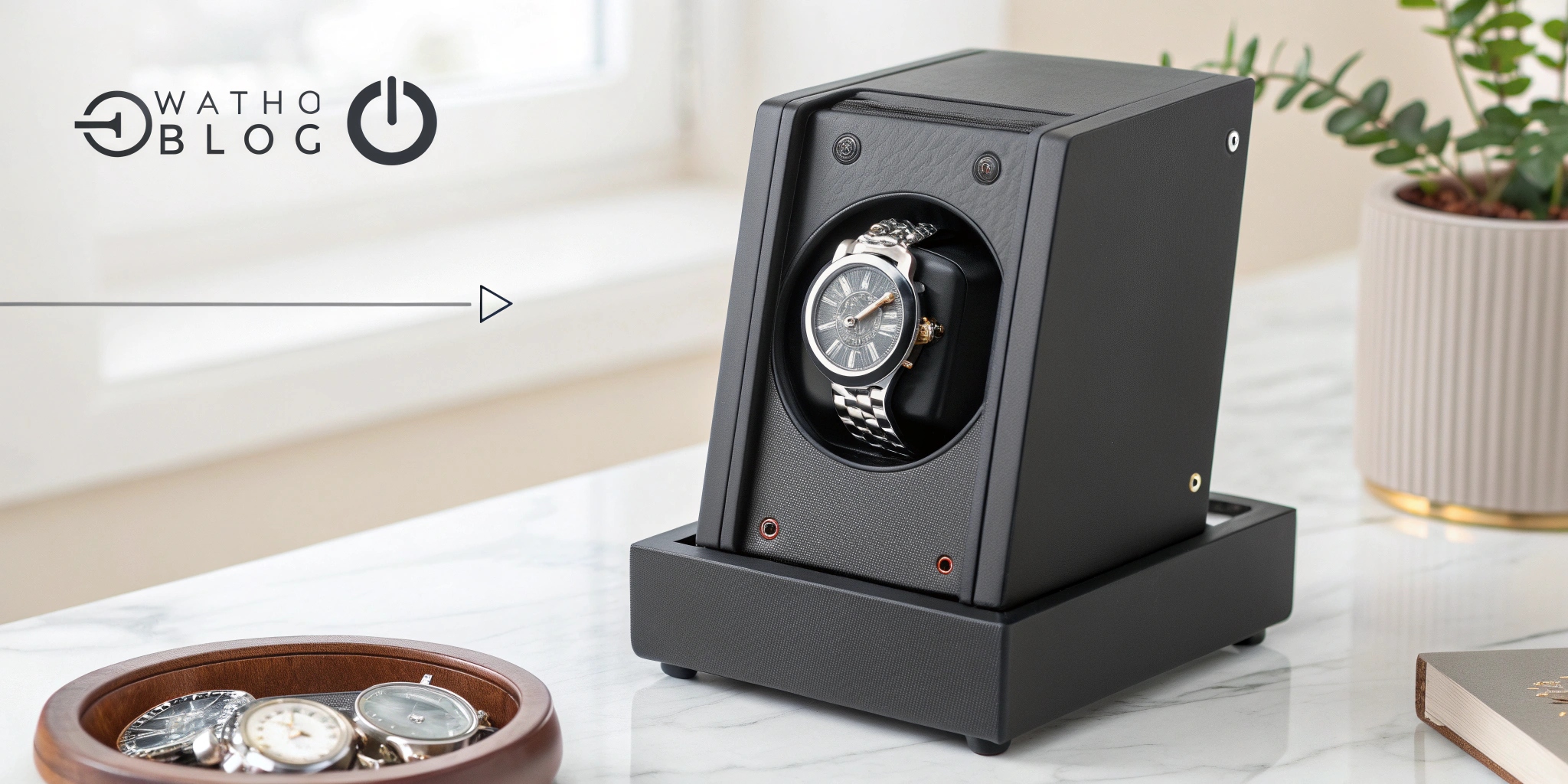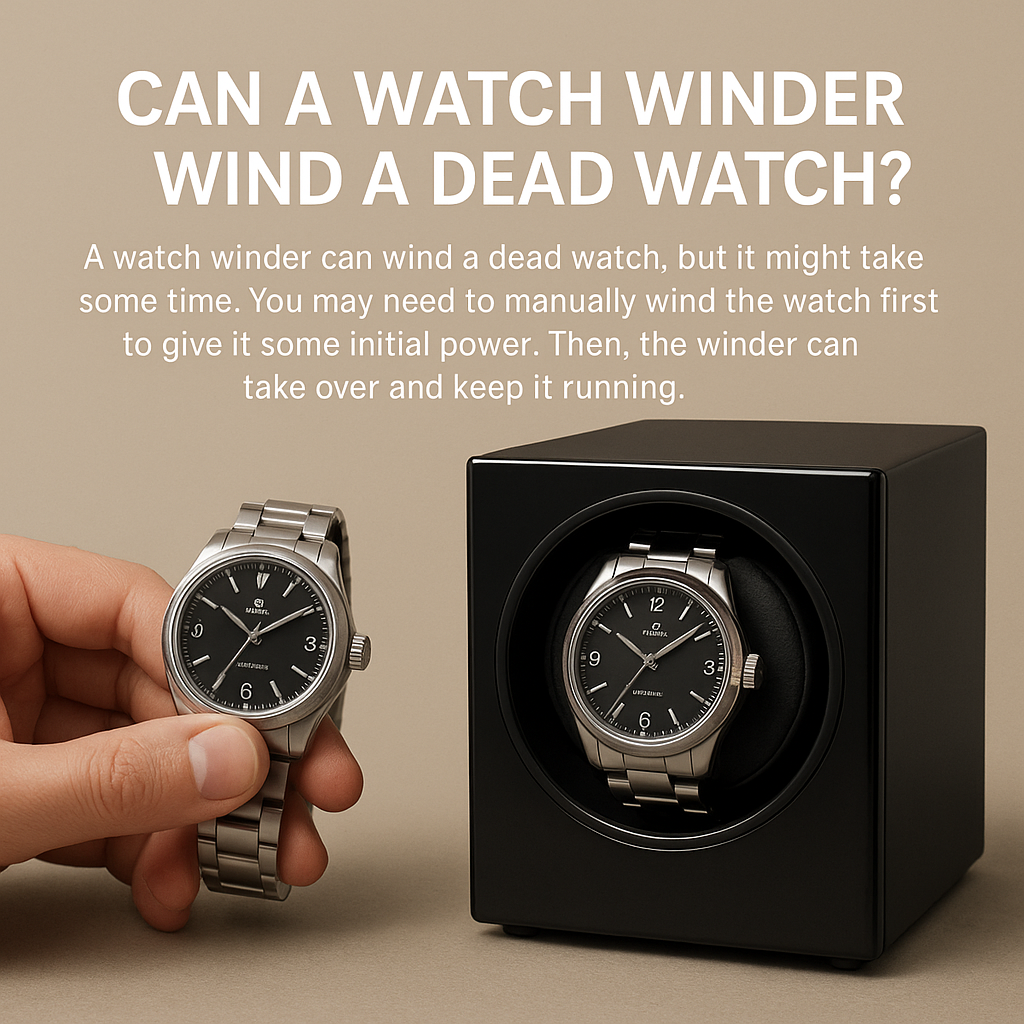
What Happens If You Leave Your Watch on a Winder?
Are you curious about using a watch winder? Maybe you are worried about the effects of leaving your watch on it for too long? Let’s find out.
Leaving your watch on a winder keeps it ready to wear. However, it may cause unnecessary wear and tear over time. Understanding the pros and cons helps you decide if it’s the right choice for you.
So, what should you do? It’s a question that many watch enthusiasts ask. Let’s explore this topic further.
How Long Can You Leave a Watch on a Winder?
Worried about damaging your watch by leaving it on a winder too long? Want to know the best usage? Let’s get to it.
You can leave a watch on a winder indefinitely, but it’s not always recommended. Continuous winding can cause wear on the movement. Consider using a winder with intermittent settings to mimic natural wearing patterns.
Leaving a watch on a winder might seem like the perfect solution. It ensures your watch is always ready to go. However, constant motion can put stress on the delicate parts inside. Think of it like a car engine running all the time; it will eventually need servicing. The key is moderation. Many modern winders come with different settings. These settings allow you to control how often the winder turns. Some even let you set the direction of rotation. This is important because different watches wind in different directions.
Here is a table to illustrate common winder settings:
| Setting | Turns Per Day (TPD) | Description | Best Use |
|---|---|---|---|
| Low | 600-800 | Gentle winding, suitable for delicate or vintage watches | Watches that don’t require many turns to stay wound |
| Medium | 800-1000 | Standard winding for most automatic watches | Most modern automatic watches |
| High | 1000-1200+ | More frequent winding for watches that need more power | Watches with complications or those that require a higher TPD |
| Intermittent | Varies | Winding with breaks to simulate natural wear | Mimicking wearing patterns and reducing wear |
Choosing the right setting depends on your watch. Always check the manufacturer’s recommendation for the ideal TPD. This will help you keep your watch in good condition.
What Are the Negatives of a Watch Winder?
Considering a watch winder but not sure about the drawbacks? Are there hidden issues you should be aware of? Keep reading!
The negatives include potential wear and tear on the watch movement. Also, there is the cost of the winder itself. Improper use can also lead to over-winding, which can damage some watches.

While watch winders offer convenience, they are not without their problems. One major concern is the increased wear on the watch’s movement. Automatic watches are designed to be worn. The natural movement of your wrist keeps them wound. When a winder does this job constantly, it can lead to unnecessary friction and stress on the internal parts. This can shorten the lifespan of your watch and require more frequent servicing.
Another factor to consider is the cost. High-quality watch winders can be quite expensive. You need to weigh the cost against the benefit of keeping your watch wound. There’s also the risk of over-winding. Some older or more delicate watches can be damaged if they are wound too much. It’s important to know your watch’s specifications and use the winder settings accordingly. Here’s a quick look at some potential issues:
- Increased Wear and Tear: Constant motion can stress internal components.
- Cost: Good winders can be expensive.
- Over-winding: Can damage delicate watches.
- Maintenance: Winders themselves may require occasional maintenance.
- Noise: Some winders can be noisy, which can be annoying.
What Is the Best Way to Store an Automatic Watch?
Wondering about the best storage method for your automatic watch? Want to protect it when you are not wearing it? Read on to learn more.
The best way to store an automatic watch is in a cool, dry place, away from direct sunlight. If you wear it regularly, a winder is fine. If not, store it in a case or its original box.

Proper storage is important for keeping your automatic watch in top condition. The environment plays a big role. Extreme temperatures and humidity can damage the delicate parts inside. Direct sunlight can fade the dial and damage the lubricants. A cool, dry place is ideal. If you wear your watch often, a winder can be useful. It keeps the watch wound and ready to wear. But if you only wear it occasionally, storing it in a case or its original box is better. This protects it from dust, scratches, and other potential damage.
Here are some storage tips:
- Environment: Store in a cool, dry place away from direct sunlight.
- Case or Box: Use a watch case or the original box for protection.
- Winder (If Needed): If you wear the watch regularly, a winder can be convenient.
- De-magnetize: Keep away from strong magnetic fields to prevent magnetization.
- Regular Cleaning: Clean your watch regularly with a soft cloth.
Can a Watch Winder Wind a Dead Watch?
Curious if a watch winder can revive a completely unwound watch? Is it a quick fix for a stopped timepiece? Let’s see.
A watch winder can wind a dead watch, but it might take some time. You may need to manually wind the watch first to give it some initial power. Then, the winder can take over and keep it running.

A watch winder is designed to maintain the power reserve of an automatic watch. But what happens when the watch has completely stopped? Can the winder bring it back to life? The answer is usually yes, but with a few points to consider. When a watch is fully unwound, it has no stored energy. The winder needs to start the winding process from scratch. This can take some time, depending on the winder’s settings and the watch’s design.
In some cases, it’s helpful to manually wind the watch first. This gives it a little initial power. Then, the winder can take over and keep it running smoothly. Think of it like jump-starting a car. The manual wind gives the watch the initial boost it needs. Here’s a step-by-step guide:
- Manual Wind: Gently wind the watch manually about 20-30 times.
- Place on Winder: Secure the watch on the winder.
- Set Winder: Choose the appropriate TPD and direction settings.
- Monitor: Check the watch after a few hours to ensure it’s running.
- Adjust if Needed: If the watch stops, adjust the winder settings or manually wind it again.
In conclusion, using a watch winder has its pros and cons, so consider your needs and habits. This helps you choose the best way to care for your timepiece.
You may also be interested in:

How long does it take to fully wind an automatic watch?
Do you have an automatic watch? Are you wondering how long it takes to wind

What is a watch winder?
Are your automatic watches always stopping? Resetting the time and date constantly is frustrating. A